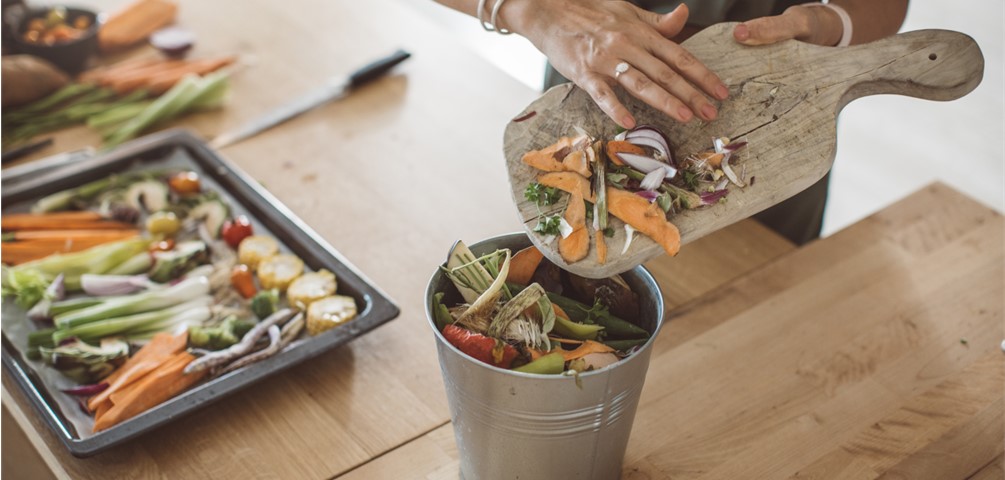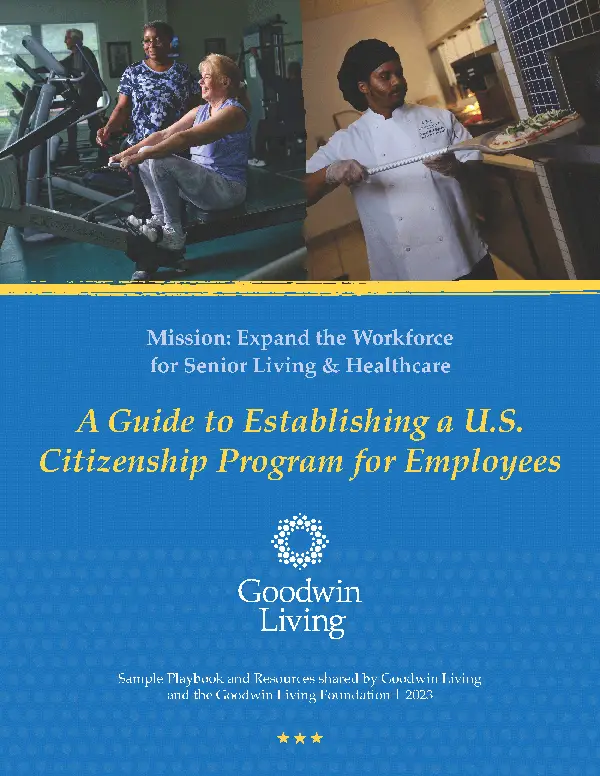
Live with Purpose - November 15, 2020
by Amanda Ranowsky
In July, we told the story of how we brought composting to Goodwin Living. We shared how our partnership with Compost Crew has allowed us to divert more than 50,000 pounds of waste from landfills since implementing our composting program in November 2019. Since July, that number has risen to more than 200,000 pounds between the two communities (Goodwin House Alexandria and Goodwin House Bailey’s Crossroads).
You might think that composting is a practice more geared toward warmer months. The abundance of fresh-grown foods and the warm weather we experience in the summer go a long way toward building up our compost piles. But composting doesn’t stop when the weather turns cold. Nor do you need a composting company’s infrastructure to keep your own compost pile churning through the winter months.
Many Goodwin Living residents are passionate about composting and the benefits it creates for the environment. Residents want to share their passions with others and encourage everyone, at any age, to consider composting.
We recently spoke to Kristie Blumer, Organic Solutions Senior Manager for Compost Crew, about why composting is such an important practice to continue year-round and how more of us can incorporate the practice into our own lives, no matter what time of year we start.
Compost is decomposed organic matter that is used as a fertilizer to enrich soil and plants. “Typically, compost is applied in soil before planting, and then again in the fall to revitalize the soil after planting season,” said Kristie. “However, it can be applied to any soil all year round.”
To create a compost pile, you need what Kristie calls “The Big Three”: heat, moisture and different kinds of feedstock. For the feedstock, while the Environmental Protection Agency (EPA) recommends a 1:1 ratio of “browns” (leaves, twigs and branches) and “greens” (grass clippings, vegetable waste, fruit scraps, and coffee grounds) for very basic backyard composting, Kristie follows the chemistry of composting and recommends a three-to-one ratio of items from your yard and food scraps. “This keeps a good carbon to nitrogen ratio, which is very important” Kristie explained. Compost generates as the layers of browns and greens decompose.
As for the other two components of your pile, heat and moisture, Kristie shared more details. “[Due to the process of decomposition,] compost piles get hot no matter what the air temperature,” said Kristie. The real trick is keeping the moisture in the pile balanced. “Hot, dry weather means that water needs to be applied,” said Kristie. “In the cold weather, you need to cover the pile so it doesn’t get too much moisture.”
Be careful about the items you add to your compost pile, as there are certain things that can contaminate the pile and ruin it for use. Make sure there are no plastics – including the little plastic stickers you’ll often find affixed to fruits and vegetables – mixed into your compost, as plastics will contaminate the pile. Compost Crew also warns that you should leave out things like gum, human or animal waste, diseased plants, charcoal and wood ash. “Like recycling,” Kristie said, “when in doubt, you have to toss it out.”
While compost generates faster during the warmer months, if your compost pile is big enough, it will create enough heat to continue working throughout the winter months. If you don’t have room for a big pile, you can still rest easy. Your pile may freeze over the colder months, but it will resume working when the weather warms.
“Composting is a year-round process,” Kristie affirmed. The best news is that, if your compost pile does freeze during the winter, it will get right back to work as soon as it thaws.
Composting also provides the perfect opportunity to use the leaves and dead plants that tend to be readily available in fall and winter. These are perfect fodder for the “browns” portion of the feedstock, one of those big three components that are a critical to your compost pile. Layering “browns” and “greens” is key to any good compost pile.
Have more leaves than your compost pile needs? Put them to another good use for your composting. The Piedmont Environmental Alliance suggests that you can provide extra insulation to your compost bin by surrounding it with bags of leaves or straw.
If you are thinking about starting to compost but still unsure of the benefits – consider the environment.
NASA cites excess carbon dioxide and methane as two big contributors to climate change. Deforestation, burning fossil fuels and desertification are leading to increased levels of carbon dioxide and methane in the atmosphere. Amazingly, the Earth provides its own potential fix to these problems—soil!
Soil itself is carbon sequestering, meaning that it can take the excess carbon in the atmosphere and store it in the ground. Adding compost to soil increases the soil’s carbon sequestration potential.
Compost can also help to combat desertification. “Compost is going to enhance any soil that you put it into,” said Kristie. By enhancing the soil with additional nutrients, it improves plant growth and water retention, which are key to keeping soil from desertification.
Composting is possible even for those who don’t have the yard space for a compost pile. For those who might live in an apartment building or some other residence without their own outdoor space, Kristie suggests vermicomposting, or worm composting.
“It’s really not that difficult,” she said. The process is different from the composting supported by The Big Three listed above. “For this process, the worms are going to be eating the material and their excrement is the finished compost.”
Businesses like Compost Crew are also options for those who want the benefits of composting but aren’t able or don’t want to create their own compost. “We created a business where we can collect your organics no matter where you live,” said Kristie.
With so many resources available, and knowing how much good composting can do, Kristie encourages everyone to incorporate composting into their daily practices. “Please start composting,” she said. “If all humans started composting, and all food scraps got recycled, we could probably counteract climate change right now, just doing that one thing.”
___________________
As Marketing & Communications Specialist, Amanda Ranowsky partners with colleagues throughout Goodwin Living Incorporated to tell our stories and raise brand awareness. From printed collateral to digital marketing, Amanda covers many bases. Before joining GHI, Amanda worked for a small, family-owned business where she gained experience in content marketing. Amanda’s creative expression extends beyond the office. She is an active member of community theater and chorus groups.
